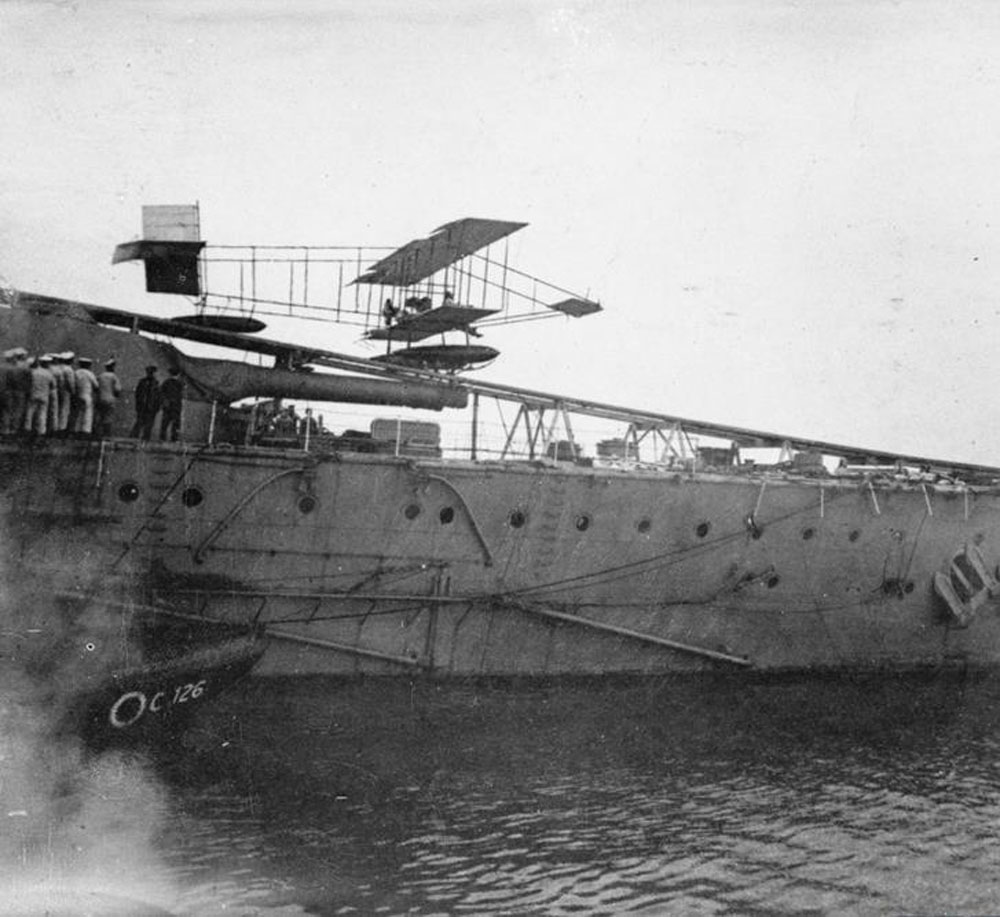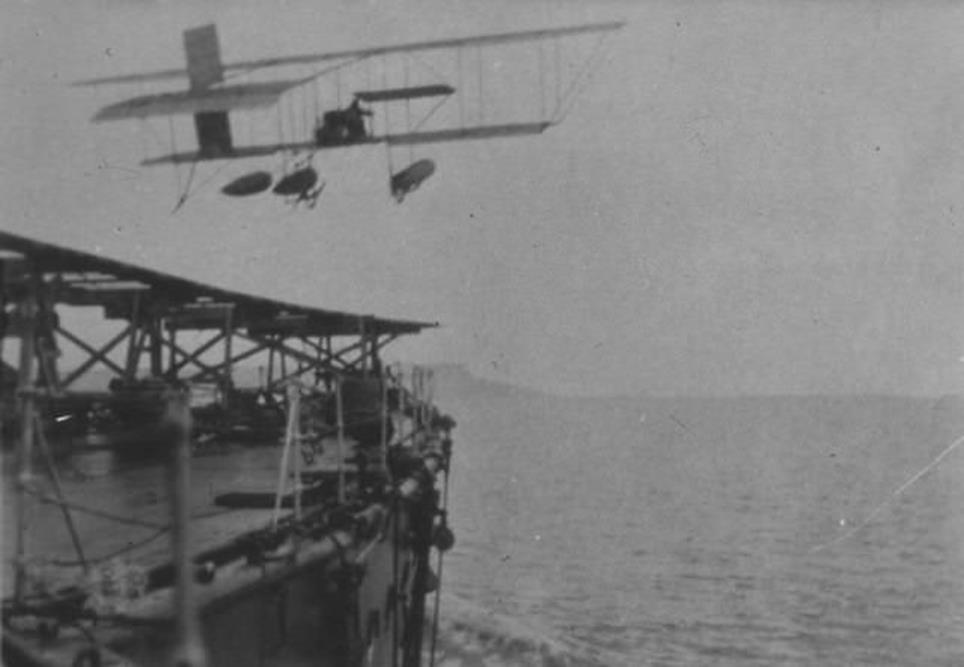Naval Aviation 3 – The Birth of British Naval Aviation
| < Aviation Pioneers | Δ Index | East Coast Air Stations > |
In 1908, the British government recognised that the use of aircraft for military and naval purposes should be investigated.
On 21 June 1910, Lt. George Cyril Colmore became the first qualified pilot in the Royal Navy, after paying for training out of his own pocket.
In November 1910, the Royal Aero Club, offered the Royal Navy two aircraft with which to train its first pilots. The Club also offered its members as instructors and the use of its airfield at Eastchurch on the Isle of Sheppey. The airfield became the Naval Flying School, Eastchurch.

Two hundred applications were received, and four were accepted:
Lieutenant C. R. Samson,
Lieutenant A. M. Longmore,
Lieutenant A. Gregory and
Captain E. L. Gerrard, RMLI. [Royal Marine Light Infantry]
These four pilots were the genesis of what became the Royal Navy Air Service and later the Fleet Air Arm.
First British take off from a ship
On 10th January 1912, Samson made the first British take-off of a plane from a ship. He flew a Short S.38 from a special ramp erected on the fore-deck of HMS Africa, moored off the Isle of Grain in the mouth of the Thames. It would be some time before a landing was attempted.

Later that year he repeated the feat, this time from a moving ship.
For the 1912 Royal Fleet Review at Weymouth, HMS Hibernia was fitted with a similar flying off platform. On the 2 May 1912 Lieutenant Samson, flying a Short-Sommer pusher biplane S.38, No. T.2, made the first ever take-off from a moving ship, The Hibernia steaming at 10.5 knots. Samson took off when the Hibernia was three miles off Portland Harbour. He rose to 45ft and then landed at the eastern end of Lodmoor.

| < Aviation Pioneers | Δ Index | East Coast Air Stations > |